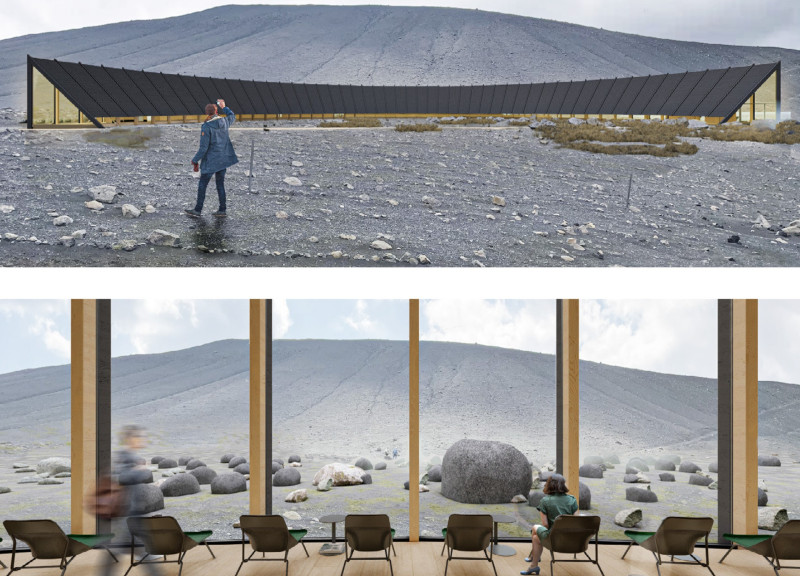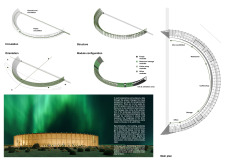5 key facts about this project
Hjarvfallsstaður is located within a volcanic region and emphasizes a close relationship between its architecture and the surrounding landscape. The design focuses on creating a space that encourages residents and visitors to engage with the natural beauty around them. By using ideas from the European Landscape Convention, Hjarvfallsstaður operates like a "window" to showcase the local environment, making it an integral part of the project.
Design Concept
The concept merges the built environment and nature, showcasing a relationship that pushes against conventional design. Hjarvfallsstaður is not built with traditional straight lines and right angles. Instead, the layout is nonlinear, inviting users to explore and discover different areas. As people move through the space, they encounter various perspectives that enhance their awareness of the unique characteristics of the site.
Spatial Experience
A key feature of the design is the variety of spatial experiences provided throughout the building. Each seating area is designed to be different, reflecting the way distinct natural features exist in the landscape. This uniqueness allows users to have their personal connection with the space, making it a more intimate experience.
Facade and Interaction
The façade is designed to offer clear views of the volcanic landscape, creating a strong link between the inside and outside. This transparency allows natural light to flow through the building and changes throughout the day. At the rear, the structure mirrors the ruggedness of the volcano, with a rough, dark exterior that pays homage to the environment. This contrast helps to strengthen the relationship between the architecture and the surrounding landscape.
Phenomenological Engagement
Hjarvfallsstaður considers sensory experiences as an essential part of engaging with the site. Changes in temperature, surface textures, and surrounding elements encourage users to connect with nature in various ways. The design creates opportunities for exploration, allowing people to immerse themselves in the distinctive qualities of the volcanic region.
The project illustrates how nature and architecture can interact, engaging users to appreciate the environment on a deeper level. The space becomes a medium through which individuals can experience the landscape intimately, where the boundaries between buildings and the natural world blend together.






















































